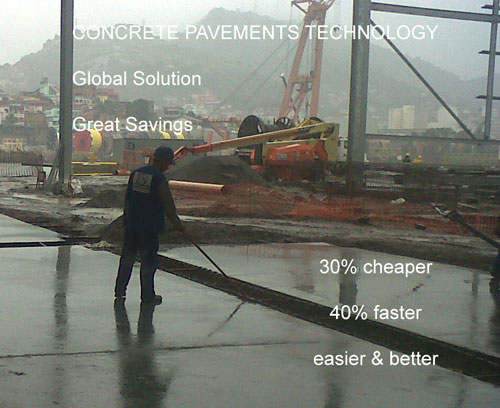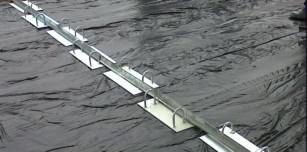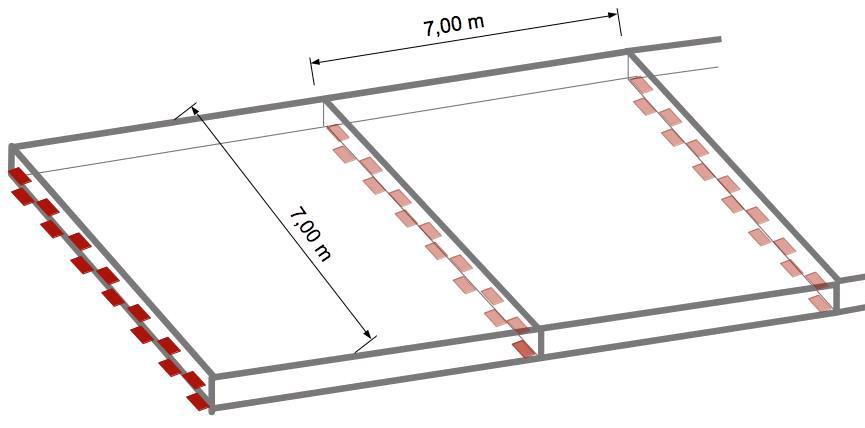
The steel load transfer plates consists of steel plates that are alternately anchored to the base of the slabs on alternate sides of the joint, and allow the transmission of tensions between all contiguous slabs, ensuring the structural continuity of the pavement. The slabs can slide on the EPS base perpendicularly to the joint, without any stresses due to expansion and / or contraction.

The rotation movement allowed by the steel load transfer plates ensures the continuity of the pavement in case of natural movements of the soil (differential settlements or impulsions of the soil). Our technology places the steel load transfer plates under the slabs allowing soil movements up to 25 mm (against 1 or 2 mm that load transfer bars (dowel bars) can accept).
Before concreting, load transmission steel plates are placed under the joint location between slabs, anchored alternately on either side of the joint, forming a rigid support.
The rotation movement allowed by these steel plates ensures perfect continuity of the pavement in case of natural movements of the soil, allowing differential settlements of the ground up to more than 25 mm without damaging the concrete slabs (against 1/2 mm accepted by load transfer bars (dowel bars).
Without our unique steel load transfer plates it is completely impossible to construct any concrete pavements allowing differential settlements of the soil, that can give any kind of warranty of perfect continuity of concrete pavements constructed over natural grounds.
Also without our unique steel load transfer plates it is impossible to construct concrete pavements over natural grounds with a CBR as low as of 5%.
And again it is impossible to construct concrete pavements without our unique steel load transfer plates using any less expensive bases (if any) or EPS bases.

OUR UNIQUE LOAD TRANSFER STEEL PLATES ENSURES VERTICAL AND HORIZONTAL ROTATION OF THE SLABS MAKING UNNECESSARY ALL EXPANTION JOINTS.









